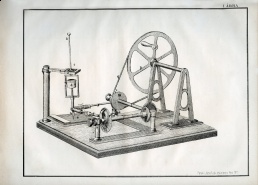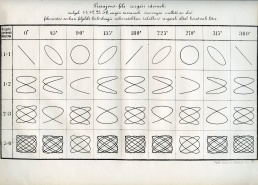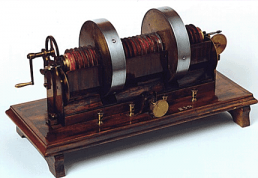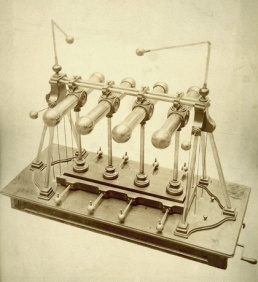Difference between revisions of "Štefan Anián Jedlík"
(→Life) |
|||
| Line 15: | Line 15: | ||
Jedlik attended the elementary school in Nagyszombat (now Trnava, 1808-10), and high schools in Nagyszombat and Pozsony (today Bratislava) (1810-17). In 1817 he became a Benedictine, and from that time continued his studies at the schools of that order : Pannonhalma (1817-19), Győr (1819-20), Pannonhalma (theology studies, 1820-22). There he was known by his Latin name Stephanus Anianus. In April 1821 he took a monastic vow. October 1822's doctorate which he was awarded at the Royal University of Pest allowed him to teach. In 1823 he completed his theology studies in Pannonhalma, and was ordained in Győr in September 1825. | Jedlik attended the elementary school in Nagyszombat (now Trnava, 1808-10), and high schools in Nagyszombat and Pozsony (today Bratislava) (1810-17). In 1817 he became a Benedictine, and from that time continued his studies at the schools of that order : Pannonhalma (1817-19), Győr (1819-20), Pannonhalma (theology studies, 1820-22). There he was known by his Latin name Stephanus Anianus. In April 1821 he took a monastic vow. October 1822's doctorate which he was awarded at the Royal University of Pest allowed him to teach. In 1823 he completed his theology studies in Pannonhalma, and was ordained in Győr in September 1825. | ||
| − | He lectured at Benedictine schools in Győr (1822-23, 1825-31), and later was appointed a professor of physics at Royal Academy of Pressburg (1831-39). | + | He lectured at Benedictine schools in Győr (1822-23, 1825-31), and later was appointed a professor of physics at Royal Academy of Pressburg (1831-39). In 1834-35 he went for the study tours to Germany and Austria. For four decades he served at the Budapest University of Sciences department of physics-mechanics (1839-78). Few guessed at that time that his activities would play an important part in bringing up a new generation of physicists. He became the dean of the Faculty of Humanities (1846-49), and by 1863 he was rector of the University. From 1858 he was a corresponding member of the Hungarian Academy of Sciences, from 1873 an honorary member. In September 1871 Jedlik spent a month in Germany on his study tour visiting the famous and new universities. After his retirement he continued working and spent his last years in complete seclusion at the priory in Győr, where he died. |
==Work== | ==Work== | ||
Revision as of 02:24, 24 February 2013
 Jedlik in 1850. | |
| Born |
January 11, 1800 Szímő (Zemné), Komárom county, Kingdom of Hungary, Habsburg Empire |
|---|---|
| Died |
December 13, 1895 (aged 95) Győr, Kingdom of Hungary, Austria-Hungary |
Štefan Anián Jedlík (Jedlik Ányos István, Stephanus Anianus Jedlik) was a 19th-century inventor, engineer, physicist, and Benedictine priest. He was also member of the Hungarian Academy of Sciences, and author of several books. He is considered to be the unsung father of the dynamo and electric motor.
Life
Born in Szimő, Kingdom of Hungary, (today Zemné, Slovakia). His mother (Róza Szabó, 1778-1828) was a member of a Hungarian noble family, while the family of his father (Ferenc Jedlik, 1767-1821) – based on the surname – was probably of Slovak origin moving in 1720 from Liptó county (now Liptov) to Szímő.
Jedlik attended the elementary school in Nagyszombat (now Trnava, 1808-10), and high schools in Nagyszombat and Pozsony (today Bratislava) (1810-17). In 1817 he became a Benedictine, and from that time continued his studies at the schools of that order : Pannonhalma (1817-19), Győr (1819-20), Pannonhalma (theology studies, 1820-22). There he was known by his Latin name Stephanus Anianus. In April 1821 he took a monastic vow. October 1822's doctorate which he was awarded at the Royal University of Pest allowed him to teach. In 1823 he completed his theology studies in Pannonhalma, and was ordained in Győr in September 1825.
He lectured at Benedictine schools in Győr (1822-23, 1825-31), and later was appointed a professor of physics at Royal Academy of Pressburg (1831-39). In 1834-35 he went for the study tours to Germany and Austria. For four decades he served at the Budapest University of Sciences department of physics-mechanics (1839-78). Few guessed at that time that his activities would play an important part in bringing up a new generation of physicists. He became the dean of the Faculty of Humanities (1846-49), and by 1863 he was rector of the University. From 1858 he was a corresponding member of the Hungarian Academy of Sciences, from 1873 an honorary member. In September 1871 Jedlik spent a month in Germany on his study tour visiting the famous and new universities. After his retirement he continued working and spent his last years in complete seclusion at the priory in Győr, where he died.
Work
Electromotor ('Electromagnetic rotor')
In 1827, Jedlik started experimenting with electromagnetic rotating devices which he later called villamdelejes forgony [elektromagnetic rotor]. He was familiar with similar experiments by Oersted, Faraday, and Barlow through various journals, including Journal für Physik und Chemie (ed. Schweigger), Annalen der Physik und Chemie (eds. Poggendorff, Gilbert), Zeitschrift für Physik und Mathematik (eds. Baumgartner, Ettingshausen), Polytechnisches Journal (ed. Dingler), as well as Gehler's Physikalisches Wörterbuch. In 1828 he demonstrated the first device which contained the three main components of practical direct current motors: the stator, rotor and commutator. Unlike in other electromotors of the time, in his prototype both the stationary and the revolving parts were electromagnetic (video, video). The motor and Jedlik's operating instructions are kept at the Museum of Applied Arts in Budapest. It still works perfectly today.
Teaching
He was a prolific author. In 1845, Jedlik was the first university professor in Kingdom of Hungary who began teaching his students in Hungarian instead of Latin. His cousin Gergely Czuczor, a Hungarian linguist, asked him to create a Hungarian technical vocabulary in physics, the first of its kind, by which he became one of its founders.
Vibrograph


Vibrations and waves were one of the central issues in physics of Jedlik's time. French mathematician Jules Antoine Lissajous discussed in various treatises the problem of determining the origin of different vibrations. In 1847 Jedlik talked about a machine which would be able to draw the Lissajouse patterns on the VIII. Congress of Hungarian Doctors and Natural Scientists in Sopron (presentation appeared in print in 1863) [3]. In 1850 he self-published a book discussing the curves. On the XIII. Congress in Eger (1868) he presented an electric Lissajous curve drawing machine, the Vibrograph [Vibrográf] [4] [5] [6]. He talked about the machine again on the XVI. Congress in Herkulesfürdőn (1872) [7]. Here is an 1876 version: [8] [9].
Vibrograph is considered a "predecessor" of the computer plotter, while Jedlik experimented with generative curves long before Ben Laponsky did his first oscillons with an electronic computer.
Dynamo invention
Jedlik's best known invention is the principle of dynamo self-excitation. In the prototype of the single-pole electric starter, both the stationary and the revolving parts were electromagnetic. In essence, the concept is that instead of permanent magnets, two opposed electromagnets induce the magnetic field around the rotor.
As one side of the coil passes in front of the north pole, crossing the line of force, current is induced. As the frame rotates further the current diminishes, then arriving at the front of the south pole it rises again but flows in the opposite direction. The frame is connected to a commutator, thus the current always flows in the same direction in the external circuit.
He did not speak about his prototype until 1856 [10]; it was not until 1861 that he mentioned it in writing in a list of inventory of the university [11]. Although that document might serve as a proof of Jedlik's status as the originator, the invention of the dynamo is linked to Siemens and Wheatstone (1867) because Jedlik's invention did not rise to notice at that time.
Impulse generator
In 1863 he discovered the possibility of voltage multiplication and in 1868 demonstrated it with a "tubular voltage generator" [voltage multiplying condenser of cascade connection, A villamfeszítő] [12], which was successfully displayed at the Vienna World Exposition in 1873. The jury chaired by Werner Siemens awarded his invention with the prize "For Progress" [Fortschritts Medaille] [13] (Jedlik didn't travel to Vienna to receive the award because of his bad experience from the Paris exhibition of 1855). Through this condenser, Jedlik framed the principle of surge generator of cascaded connection (the Cascade connection was an other important invention of Jedlik). The generator was an early form of the impulse generators now applied in nuclear research.
Literature
- László Verebélÿ, Jedlik Ányos két úttörő találmányáról, Budapest: Magyar Elektrotechnikai Egyesület, 1930. Reprint: Budapest: Jedlik Ányos Társaság, 1994. (Hungarian)
- Viktor Ferenczy, Jedlik Ányos István élete és alkotásai, 1800–1895, 1.–4. rész. Győr, 1936–1939. Reprint: Győr: Czuczor Gergely Bencés Gimnázium, 2000. (Hungarian)
- Gyula Radnai, "Az akadémikus Jedlik Ányos", 1995. (Hungarian)
- Árpád Király (ed.), Jedlik Ányos emlékezete születésének 200. évfordulóján, Budapest: Jedlik Ányos Társaság, 2000. (Hungarian)
- Miroslav Tibor Morovics, "Snahy o aplikáciu elektromagnetických javov v diele Š. A. Jedlíka", in MESDEF 2005: XXIII. Zborník dejín fyziky, Bratislava: Slovak Academy of Sciences, 2006, pp 67-94. (Slovak)
- Jedlik's letters to his family (Hungarian)


